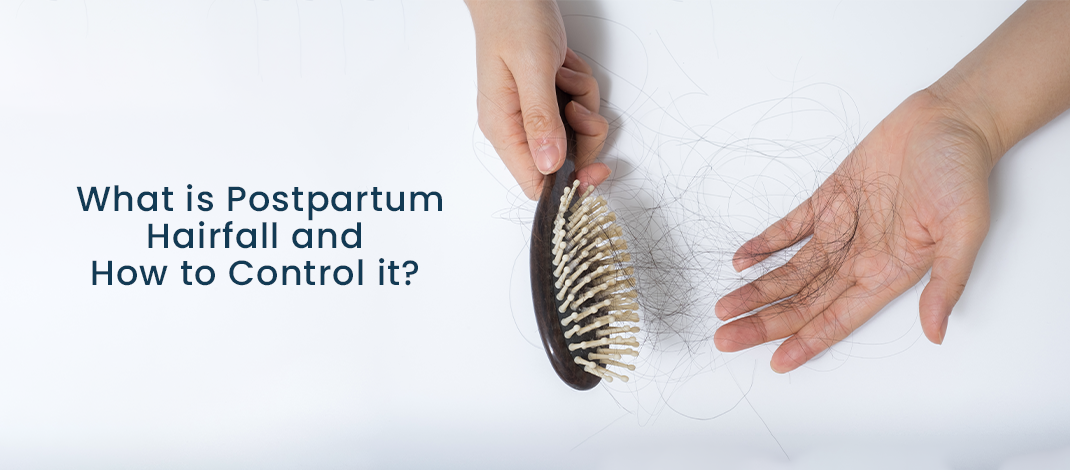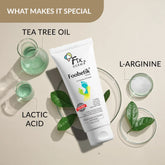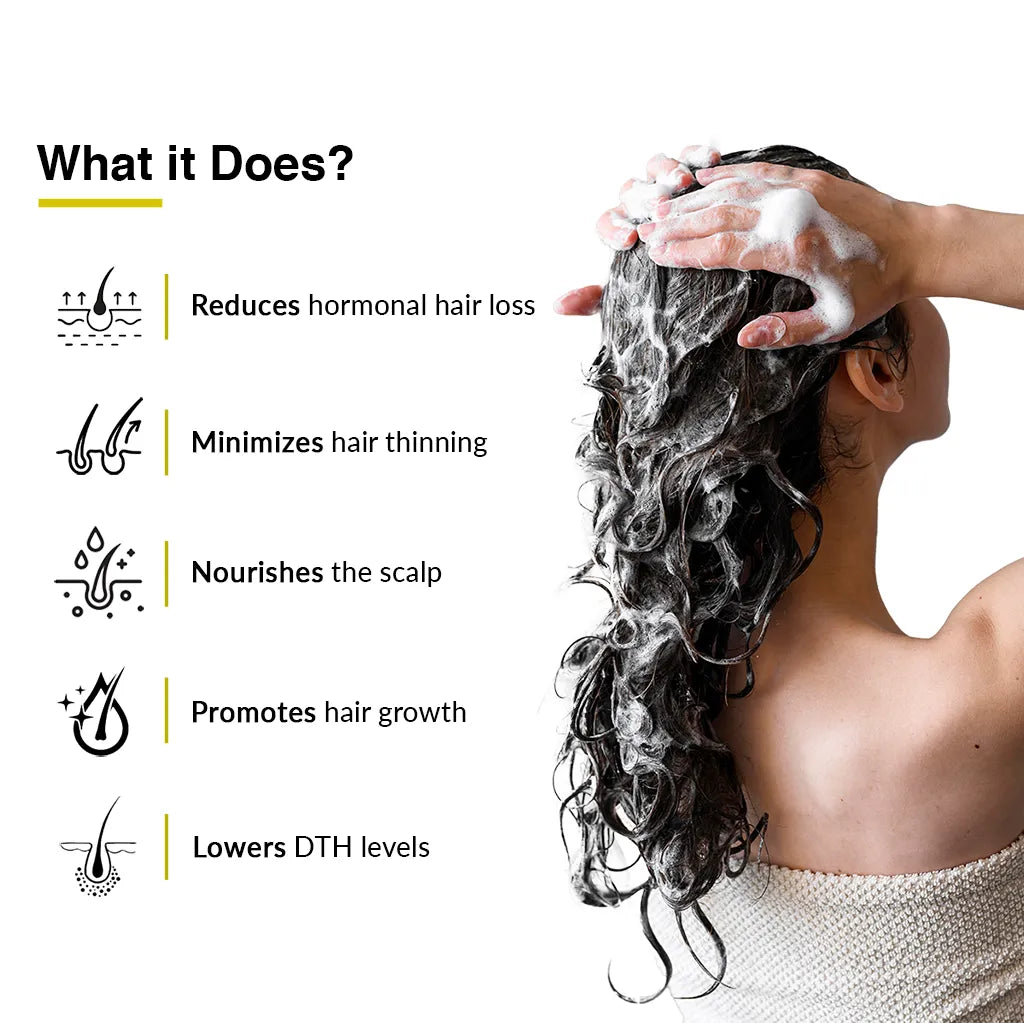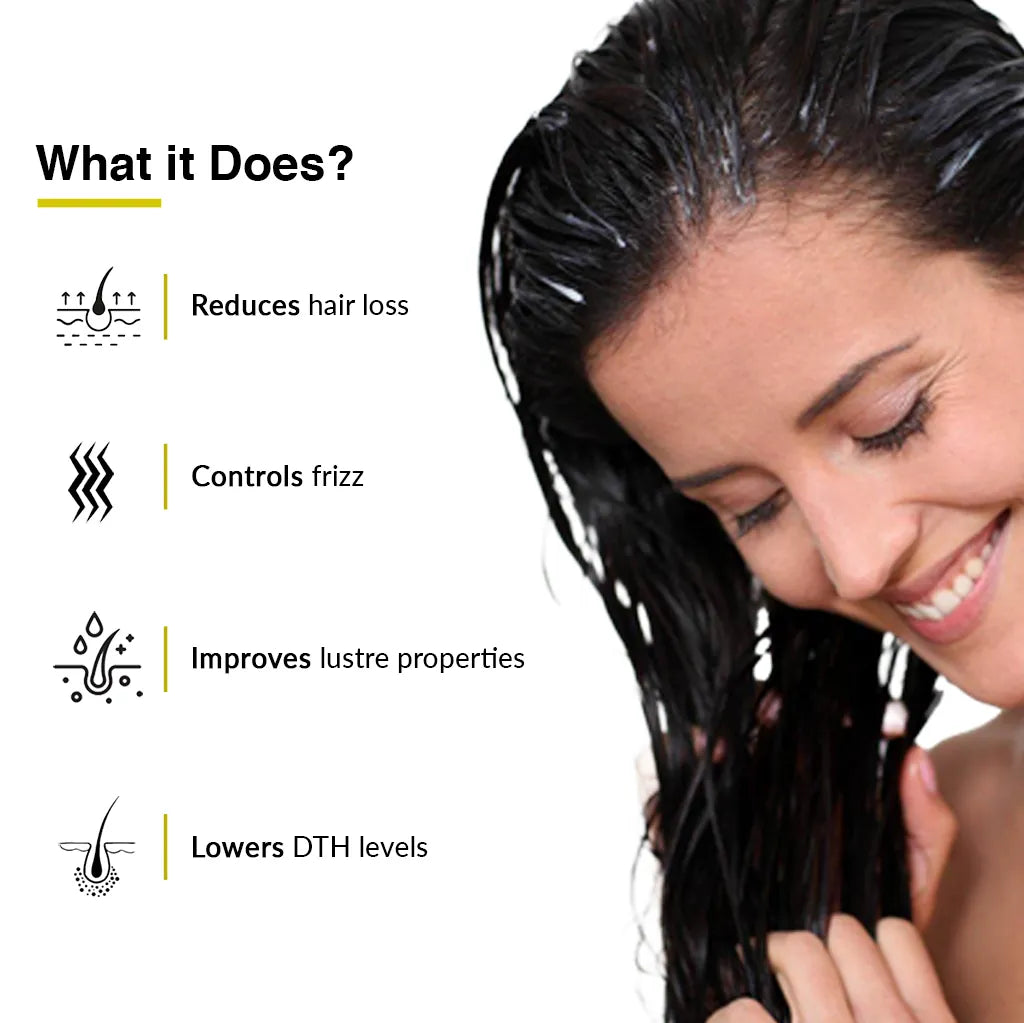What is Postpartum Hair Fall and How to Control it?

Bringing a new life into being is a blissful experience for a mother. But, the initial stage of motherhood can be extremely challenging at the same time. As a woman’s body undergoes several physical and emotional changes after childbirth. The most prominent physical change that a woman experiences is postpartum hair fall. This phenomenon is normal but can be stressful for many new mothers as they are already navigating the other challenges of motherhood. Going forward, we will dive deeper into the details of postpartum hair fall, its causes, treatment, and the products that can be incorporated to minimize hair loss.
Understanding Postpartum Hair Fall
The scientific name given to postpartum hair fall is ‘telogen effluvium’. This situation is induced from the time of childbirth and usually stops around the child’s first birthday or even earlier. It is categorized as a temporary and common condition seen in almost every woman due to excessive hair loss post-pregnancy.
Excessive hair shedding takes place once the baby is delivered. Individual hair strands are visible on pillows, clothes, and shower drains. Many new mums stress out seeing their hair thinning out and face difficulty finding the solution for hair regrowth. Thus, the concern is natural and logical.
During pregnancy and post-pregnancy, hormones fluctuate very frequently which is natural and perfectly normal. Hair loss is one of the results of fluctuating hormones and is completely provisional which ends when the child is about to turn one.
Causes of Postpartum Hair Fall
During pregnancy, there is a notable shift in the levels of hormones (especially estrogen) to provide fuller nutrition required for the growth and development of the baby. Due to the changing hormonal levels, there is a considerable change in the hair growth cycle as well. The hair first enters the anagen phase i.e., the growing phase during pregnancy. The hair looks thicker and lustrous during the growing phase. Gradually, the hair follicles shrink leading to slower hair growth. Here, the hair has entered the catagen phase. After giving birth, the hair starts shedding and there is no hair growth at all. This is known as the resting phase of the hair growth cycle i.e., the telogen phase.
Just like the anagen and catagen phases, the telogen phase is also temporary in nature. The excessive hair loss during the telogen phase is due to the estrogen's dropping levels, and it signifies that the mother’s body is returning to the pre-pregnancy hormonal structure. The hair naturally re-grows in place of the shedded hair which often happens when the child is about one year old.
Timeline of Postpartum Hair Fall
A general overview of the timeline of postpartum hair fall can help mothers understand and cope with the natural process of hair loss. However, the postpartum hair loss timeline can vary from mother to mother depending upon the hormonal fluctuations, diet intake, stress level, and overall health of the woman. Prolonged or severe hair loss should not be taken as normal instead, a doctor’s consultation is advisable.
The postpartum hair loss timeline is categorized into five stages. Each stage lasts for some time and has different hair loss patterns.
- Immediate postpartum (0-3 months): Immediately after delivering, a mother experiences minimal hair shedding or no changes in their hair growth cycle. The increased estrogen levels during pregnancy induce voluminous and thicker hair. Hence, there’s negligible or no change in the hair growth cycle.
- Onset of postpartum hair fall (3-4 months): Due to the rapid decline in estrogen levels, the hair follicles start losing their hair. Hair thinning and excessive hair shedding naturally occur during this period.
- Peak hair fall (4-6 months): Significant hair loss is noticeable during this period. Loose hair strands are found on clothes, hair brushes, and pillows, and even clog the shower drains. Mothers generally stress out a lot seeing clumps of hair falling out. But, keeping calm and eating a healthy diet is necessary for recovery and regrowth.
- Offset of postpartum hair fall (6-12 months): During this stage, a mother sees a visible reduction in hair loss. Gradually, the hair follicles start transitioning back to the normal hair growth cycle and new hair starts emerging in place of the shedded hair.
- Regrowth of the hair (12+ months): By this time, estrogen starts restoring to the pre-pregnancy period, and normal hair growth is evident. Improved density and volume of the hair reappear during this time. Some mothers may continue to notice minimal hair loss during this too but the overall growth of hair is evident.
Solution and Remedies of Postpartum Hair Fall
A newly emerged mother who is already dealing with the different challenges of motherhood has to face postpartum hair loss which is quite depressing. However, some solutions and remedies can be implemented to minimize the hair loss impact and promote hair growth.
Referring to the below-mentioned strategies can help new mums address the problem of postpartum hair fall:
- Healthy Diet: Intake of proper nutrients and adequate amounts of vitamins and minerals promote healthy hair growth. Incorporating a balanced diet in meals rich in vitamins, minerals, fiber, and protein will help strengthen the hair follicles and impact the overall hair fall. Supplements with key nutrients like biotin, vitamin D, iron, zinc, and omega-3 fatty acids can be taken with the advice of a doctor to combat hair fall.
-
Hair care: Gently massaging the scalp and using a wide-tooth comb to detangle hair is advised to overcome postpartum hair fall problems. Using mild sulfate and paraben-free shampoo and conditioners by Fixderma can help reduce excessive hair loss as it is rich in key ingredients required for hair growth.
Products that are highly effective in combating the problem of postpartum hair fall are Kairfoll Femme Specifique Shampoo & Kairfoll Femme Specifique Conditioner by Fixderma. The combo is expertly designed for women facing hair thinning and excessive hair loss post-pregnancy. It comes with HDS technology which enables the nutrients to reach deeper into the scalp giving prolonged nourishment. The ingredients like red onion bulb extract, procapil, and follicusan DP work in synergy to reduce hormonal hair loss and minimize hair thinning. - Stress management: Manage stress through relaxation techniques such as deep breathing, meditation, yoga, or mindfulness exercises. Prioritize self-care and make time for activities that help you relax and unwind, whether it's reading, taking a bath, spending time outdoors, or engaging in hobbies you enjoy.
By implementing these solutions and remedies, a newly emerged mother can navigate postpartum hair loss with confidence and support the hair's natural regrowth process.










